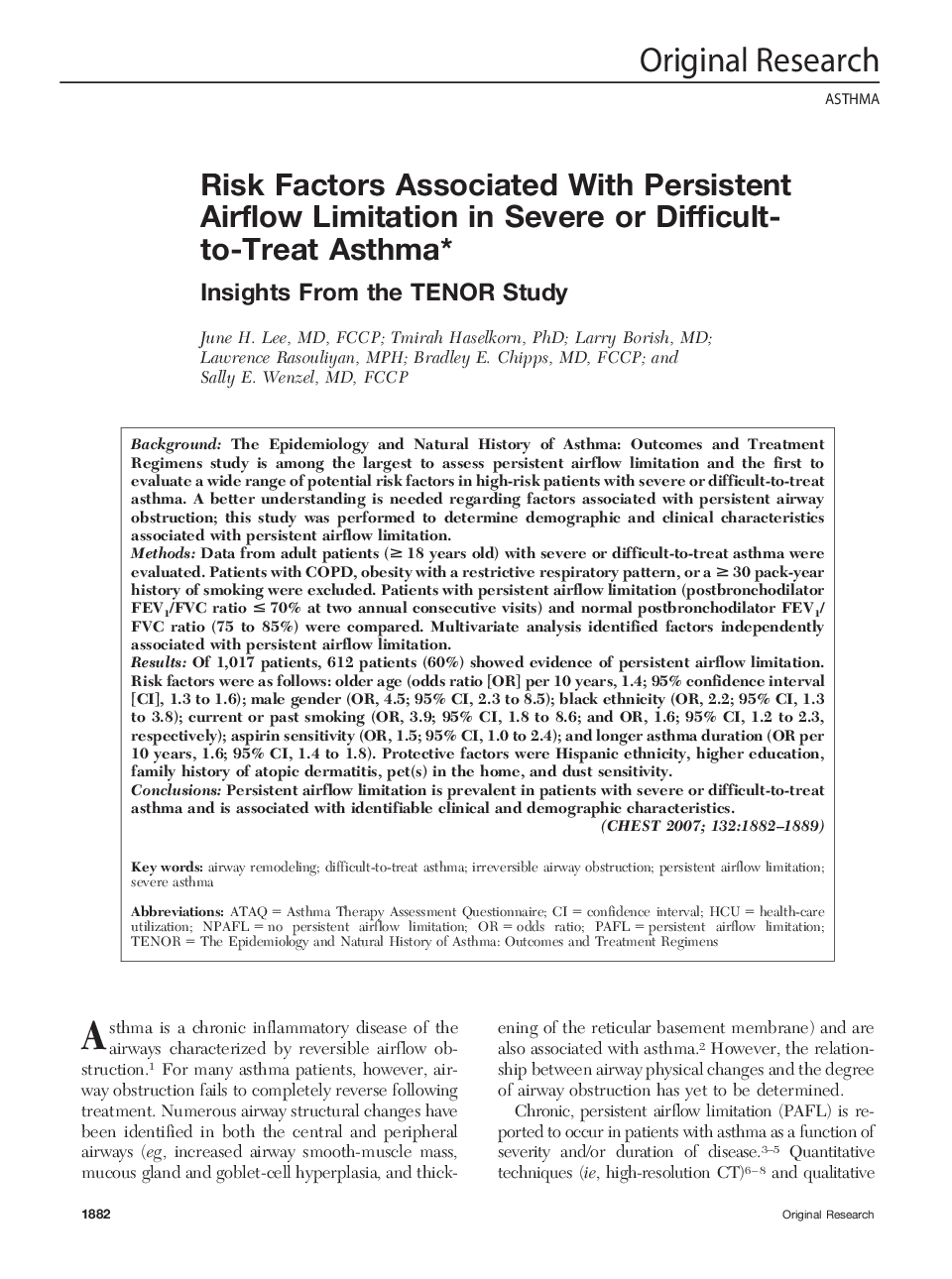| کد مقاله | کد نشریه | سال انتشار | مقاله انگلیسی | نسخه تمام متن |
|---|---|---|---|---|
| 2904339 | 1173409 | 2007 | 8 صفحه PDF | دانلود رایگان |

BackgroundThe Epidemiology and Natural History of Asthma: Outcomes and Treatment Regimens study is among the largest to assess persistent airflow limitation and the first to evaluate a wide range of potential risk factors in high-risk patients with severe or difficult-to-treat asthma. A better understanding is needed regarding factors associated with persistent airway obstruction; this study was performed to determine demographic and clinical characteristics associated with persistent airflow limitation.MethodsData from adult patients (≥ 18 years old) with severe or difficult-to-treat asthma were evaluated. Patients with COPD, obesity with a restrictive respiratory pattern, or a ≥ 30 pack-year history of smoking were excluded. Patients with persistent airflow limitation (postbronchodilator FEV1/FVC ratio ≤ 70% at two annual consecutive visits) and normal postbronchodilator FEV1/FVC ratio (75 to 85%) were compared. Multivariate analysis identified factors independently associated with persistent airflow limitation.ResultsOf 1,017 patients, 612 patients (60%) showed evidence of persistent airflow limitation. Risk factors were as follows: older age (odds ratio [OR] per 10 years, 1.4; 95% confidence interval [CI], 1.3 to 1.6); male gender (OR, 4.5; 95% CI, 2.3 to 8.5); black ethnicity (OR, 2.2; 95% CI, 1.3 to 3.8); current or past smoking (OR, 3.9; 95% CI, 1.8 to 8.6; and OR, 1.6; 95% CI, 1.2 to 2.3, respectively); aspirin sensitivity (OR, 1.5; 95% CI, 1.0 to 2.4); and longer asthma duration (OR per 10 years, 1.6; 95% CI, 1.4 to 1.8). Protective factors were Hispanic ethnicity, higher education, family history of atopic dermatitis, pet(s) in the home, and dust sensitivity.ConclusionsPersistent airflow limitation is prevalent in patients with severe or difficult-to-treat asthma and is associated with identifiable clinical and demographic characteristics.
Journal: Chest - Volume 132, Issue 6, December 2007, Pages 1882–1889